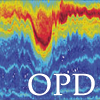
|
Kumar Ravi Prakash Postdoctoral Scholar rprakash@uw.edu |
Research Interests
• Air-sea interaction.
• Tropical Cyclone.
• Physical Oceanography.
Department Affiliation
 |
Ocean Physics |
Education
Ph.D. Atmospheric & Oceanic science, Centre for Atmospheric Sciences (CAS), Indian Institute Of Technology Delhi (IIT Delhi), 2020
M.Tech Atmospheric Oceanic Sc. & Technology, Centre for Atmospheric Sciences (CAS), Indian Institute Of Technology Delhi (IIT Delhi), 2014
M.Sc. Mathematics, BR Ambedkar Bihar University, Muzaffarpur, 2010
|
Publications |
2000-present and while at APL-UW |
Performance of various wind models for storm surge and wave prediction in the Bay of Bengal: A case study of Cyclone Hudhud Sebastian, M., M.R. Behera, K.R. Prakash, and P.L.N. Murty, "Performance of various wind models for storm surge and wave prediction in the Bay of Bengal: A case study of Cyclone Hudhud," Ocean Eng., 297, doi:10.1016/j.oceaneng.2024.117113, 2024. |
More Info |
1 Apr 2024 |
|||||||
|
Wind and pressure fields associated with a tropical cyclone are the primary driving atmospheric forcing for storm surge computations. Here, performance of various atmospheric forcing during an Extremely Severe Cyclonic Storm Hudhud of Bay of Bengal (BoB) in computing storm surges and wave characteristics are evaluated with observations. Atmospheric forcings considered are obtained from parametric wind models of Holland, reanalysis data -ERA5, and a fully physics-based weather prediction model-WRF. Study utilises ADvance CIRCulation (ADCIRC) model in standalone as well as tightly coupled with, Simulating WAves Nearshore (ADCIRC + SWAN) for generating storm surge and wave characteristics, respectively. Peak water levels at landfall are well computed when forced by parametric wind model than ERA5 or WRF. Also, ADCIRC + SWAN, resulted in an additional wave-set up ranging from 0.05 m to 0.35 m with different atmospheric forcing. Furthermore, study revealed that, both standalone ADCIRC and coupled ADCRIC + SWAN model predicted storm surge levels better when forced with 1980 Holland wind model. However, significant wave heights were better simulated by ADCIRC + SWAN with WRF forcing. This study aims to assess the capabilities of various atmospheric forcing methods employed in the BoB for the prediction of storm surges and waves, in addition to providing valuable insights for further improvement. |
|||||||||




